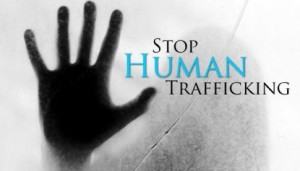Sex-Trafficking in China
 On June 19, 2013 the State Department released its annual report, “Trafficking in Persons Report.” China received an automatic downgrade to the lowest ranking, Tier 3. The State Department acknowledged the one-child policy as the “key source of demand” for sex-trafficking within the country, but remained silent on revoking the policy in its recommendations for China.
On June 19, 2013 the State Department released its annual report, “Trafficking in Persons Report.” China received an automatic downgrade to the lowest ranking, Tier 3. The State Department acknowledged the one-child policy as the “key source of demand” for sex-trafficking within the country, but remained silent on revoking the policy in its recommendations for China.
The report stated that “the Chinese government’s birth control policy and a cultural preference for sons, create a skewed sex-ratio of 118 boys to 100 girls in China, which served as a key source of demand for the trafficking of foreign women as brides for Chinese men and for forced prostitution.”
It also acknowledged that, “the government [of China] did not address the effects its birth limitation policy had in creating a gender imbalance and fueling trafficking, particularly through bride trafficking and forced marriage.”[1]
TERMS
Trafficking in persons: “Trafficking in persons” is also synonymous to “human trafficking” and is the term used for “the act of recruiting, harboring, transporting, providing, or obtaining a person for compelled labor or commercial sex acts through the use of force, fraud, or coercion…Human trafficking can included but does not require movement. People may be considered trafficking victims regardless of whether they were born into a state of servitude, were transported to the exploitative situation, previously consented to work for a trafficker, or participated in a crime as a direct result of being trafficked.”[2]
Sex-Trafficking: “When an adult is coerced, forced, or deceived into prostitution—or maintained in prostitution through one of these means after initially consenting.”[3]
Tier 3: Tier 3 countries are countries which do not fully comply with the Victims of Trafficking and Violence Protection Act of 2000 (commonly known as TVPA) nor are making significant efforts to do so.
There are several factors which determine a country’s tier status:
1) If the country in question is a country of “origin, transit, or destination for severe forms of trafficking”
2) “The extent to which the country’s government does not comply with the TVPA’s minimum standards, and in particular, the extent to which officials or government employees have been complicit in severe forms of trafficking. “ [emphasis added]
3) “Reasonable measures required to bring the government into compliance with the minimum standards in light of the government’s resources.”[4]
Sex-Ratio: the ratio of males to females. The natural ratio at birth across all human populations is 106 males for every 100 females. That is to say, there are 106 boys born for every 100 girls. Any sex ratio at birth that is higher than 106:100 is unnatural; it is the result of deliberate human actions, such as the selective abortion of unborn girls and female infanticide.[5]
STATISTICS
- China’s sex ratio at birth is currently 118-120 men for every 100 females.[6]
- Reports estimate that there are currently 37,000,000 more males than females living in China.[7]
- In addition to sex-trafficking, China is the only country in the world in which female suicides are higher than male suicides.[8]
- Although in most of China, male suicide rates are higher than female suicide rates, Chinese women of ages 20-34 have such high rates of committing suicide that they drag the national average for suicides to be female dominated.[9]
- In areas in China in which women are allowed to bear a second child if the first is a daughter, the sex-ratios at birth are natural; there is no sex-selection against women. [10]
- Women from these areas, however, are most susceptible to being trafficked into urban, low-female areas.[11]
REFERENCES
[1] U.S. Department of State: Office to Monitor and Combat Trafficking of Persons. Country Narratives: China. 2013, http://www.state.gov/documents/organization/210738.pdf.
[2] U.S. Department of State. Trafficking in Persons Report. June, 2013: page 29.
[3] Ibid.
[4] Ibid., p46.
[5] [5] Kenneth, Wachter. Essential Demographic Methods. Berkeley. 2012.
[6] Zhu, Wei Xing, Li Lu, and Therese Hesketh. “China’s excess males, sex selective abortion, and one child policy: analysis of data from 2005 national intercensus survey.” BMJ: British Medical Journal 338 (2009).
[7] Gendercide Statistics. All Girls Allowed.
[8] Yip, Paul SF, et al. “Suicide rates in China during a decade of rapid social changes.” Social Psychiatry and Psychiatric Epidemiology 40.10 (2005): 792-798.
[9] Ibid.
[10] Hesketh, Therese, Li Lu, and Zhu Wei Xing. “The effect of China’s one-child family policy after 25 years.” New England Journal of Medicine 353.11 (2005): 1171-1176.
[11] U.S. Department of State: Office to Monitor and Combat Trafficking of Persons. Country Narratives: China. 2013, http://www.state.gov/documents/organization/210738.pdf.

